Team Autonomy and Alignment in Scrum
Explores why team autonomy in Scrum must be balanced with alignment to strategic goals, highlighting the role of clear objectives and leadership in …
Techniques and methodologies for high-quality software engineering.


Software Development encompasses the techniques and methodologies employed to engineer high-quality software solutions that meet user needs and business objectives. It is a systematic approach that integrates various practices, including Agile, Lean, and DevOps, to enhance collaboration, efficiency, and adaptability within teams. This concept is crucial as it enables organisations to deliver value predictably and sustainably, fostering a culture of continuous improvement and responsiveness to change.
By focusing on iterative development, teams can quickly adapt to feedback and evolving requirements, ensuring that the software remains relevant and effective. The emphasis on automation, testing, and integration within Software Development practices reduces the risk of defects and accelerates delivery cycles, allowing for frequent releases that enhance customer satisfaction. Moreover, it promotes a holistic view of the software lifecycle, encouraging cross-functional collaboration and knowledge sharing among team members.
This long-term, systemic approach not only improves the quality of the software produced but also cultivates an environment where innovation thrives, enabling organisations to remain competitive in a rapidly changing market. The integration of evidence-based management principles further supports informed decision-making, ensuring that teams can navigate complexity and uncertainty effectively. By prioritising these practices, organisations can achieve a sustainable competitive advantage through enhanced software development capabilities that align with their strategic goals and customer expectations.
Explores why team autonomy in Scrum must be balanced with alignment to strategic goals, highlighting the role of clear objectives and leadership in …
Explore and compare Agile frameworks. Understand their principles, applications, and impact on organisational agility and value delivery.
Master estimation in Agile and Scrum. Improve forecasting, manage uncertainty, and align expectations using empirical data and collaborative …
Learn effective strategies for scaling agile across multiple teams, managing dependencies, avoiding common pitfalls, and maintaining agility as your …
Scrum Masters need authority to remove obstacles and drive project success. Without empowerment, they can't fulfil their role or be held accountable …
A critical lens on attempts to combine project management with agile delivery approaches.
Learn how to maintain data integrity during DevOps migrations, weighing full versus selective data transfer, managing risks, and ensuring team …
Ditch the Big Bang rewrite. Discover why sustainable, in-place change drives true engineering excellence and lasting transformation in your teams.
Learn how to overcome scaling challenges in product development by reducing technical debt, improving team alignment, and building sustainable, …
Achieving excellence in software craftsmanship, architecture, and engineering practices.
Measuring individual cycle time overlooks team performance and system bottlenecks. Focus on lead time, throughput, and process efficiency to improve …
Tracking individual cycle time can harm team performance by encouraging task cherry-picking, reduced collaboration, and lower quality, without …
The Agile ideal: teams with all the skills needed to deliver end-to-end value.
Explores how learning Scrum and process improvement can shift developer mindsets, boost collaboration, and enhance software delivery in Agile teams.
Agnostic Agile is a movement that promotes ethical, context-driven agility by prioritising principles over rigid frameworks. Championed by thought …
Gain practical skills in Scrum, Agile, and DevOps for software development, with hands-on team exercises and preparation for the Professional Scrum …
Explores Scrum Team effectiveness, emphasising that consistent delivery is essential and highlighting the Scrum Master's accountability for enabling …
Master Agile Planning to balance flexibility with predictability. Align teams, optimise delivery, and drive value continuously.
UX is integrated into Scrum, not handled separately. Design and validation happen within Sprints and backlog refinement, supporting continuous, …
Unlock better flow and real value with the Open Guide to Kanban, a practical, community-driven resource for teams in any industry. Join the movement!
Technical debt limits business agility, slows engineering, and hinders innovation. Managing it with automation and transparency is key to staying …
Explores how leaders can foster an agile mindset in development teams by promoting autonomy, mastery, purpose, and a culture of quality and continuous …
Worried about cloud migration chaos? Discover why a hybrid approach beats “lift and shift” and how to align teams for a seamless, risk-free …
Rollback is often riskier than rolling forward, especially for stateful apps. Safer deployment relies on progressive delivery and fail-forward …
Explains how Windows OS updates shifted from infrequent, risky releases to safe, staged rollouts using ring-based deployment and real-time user …
Many agile transformations restrict team autonomy, leading to control and compliance instead of true ownership, adaptability, and meaningful …
The end of a Sprint is a checkpoint for review and adaptation, not a deadline. Focus on flow, learning, and continuous improvement over strict task …
Explore practical strategies for Agile training, including virtual class setups, continuous forecasting, and using metrics to improve planning, …
A Service Level Expectation predicts how long work items take to complete, helping Scrum Teams improve workflow, identify issues, and set clear …
Inspecting and adapting the increment to ensure transparency and stakeholder feedback.
Kanban focuses on improving workflow by removing bottlenecks and constraints, reducing work in progress, and increasing process efficiency, not by …
Optimise Agile execution with Agile Planning Tools. Enhance backlog management, forecasting, and collaboration across teams.
Explores why Scrum Masters need authority, not just influence, to enforce Agile practices, remove blockers, and ensure teams follow Scrum for true …
Enhance forecasting in Agile and Scrum. Use empirical data to predict delivery timelines, manage risk, and optimise value delivery.
Is legacy tech slowing your team? Discover how removing friction unlocks agility, innovation, and faster delivery in your organisation.
Explores how staging environments aim to reduce risk in software development, their hidden costs, and modern alternatives like feature flags and …
Microsoft’s switch to 3-week Sprints increased team anxiety due to greater transparency, exposing inefficiencies but enabling faster, more frequent …
Explains why using blocked columns for stalled tasks on project boards harms workflow, and suggests better ways to highlight and address blocked work …
Practical experience is essential for effective Scrum Masters; certification alone is insufficient. True expertise comes from guiding teams, solving …
Staging environments can’t fully replicate production, often leading to false confidence. Real risk reduction comes from safe, incremental releases to …
Teams struggle not from lacking frameworks, but from ignoring feedback. Success depends on acting on signals, fostering safety, and empowering real …
Balancing backlog refinement prevents wasted effort and chaos. Aim for just enough detail so developers can plan sprints confidently without …
Improve clarity and readiness with Backlog Refinement. Ensure work is well-defined, prioritised, and ready for execution.
Explores the difference between true agility and superficial agile practices, highlighting the impact of Taylorism and offering steps to foster …
Explores common misconceptions about Agile teams, clarifying that true agility demands discipline, planning, and professionalism, not chaos or lack of …
Discover how evidence-based management empowers Agile leaders to make data-driven decisions, foster continuous improvement, and boost team performance …
Explains how self-managing teams in Scrum need structure and leadership, clarifying the Scrum Master's role in maintaining clarity, alignment, and …
Explains how self-managing teams thrive with autonomy balanced by structure, highlighting the need for clear goals, accountability, and alignment …
Explains how Scrum reveals team dysfunctions by clarifying roles and accountability, highlighting its purpose to expose issues that hinder value …
Explores how teams misuse self-management to dodge alignment, clarifying that true autonomy requires accountability, shared goals, and adherence to …
Explores how Product Owners can drive strategy, maximise value, and lead Scrum teams effectively, highlighting the need for empowerment beyond basic …
Agile and Scrum expose underlying team and workflow issues, helping organisations address real problems rather than masking dysfunction with process …
Explains how fragmented automation and tool silos harm software delivery, and advocates for unified engineering systems and platform engineering to …
Scrum Masters are most effective when they combine leadership skills with technical, business, and organisational mastery to support teams, Product …
Explains how managing technical debt and distinguishing it from poor quality can boost product efficiency, reduce costs, and support sustainable …
Explores how DevOps transformation, refactoring, and ownership reduce technical debt, streamline development, and boost efficiency, team satisfaction, …
Explore proven strategies from Azure DevOps for building resilient, reliable software systems, covering transparency, automation, telemetry, incident …
Explores the financial, productivity, and reputational impacts of poor-quality code, and offers practical steps to turn code quality into a …
Professional Scrum Teams prioritise software quality, accountability, and continuous improvement, ensuring each release is reliable, defect-free, and …
Explains why true Scrum requires real team agency, not just self-management in name, and how lacking agency leads to ineffective, ritualistic Agile …
We partner with businesses across diverse industries, including finance, insurance, healthcare, pharmaceuticals, technology, engineering, transportation, hospitality, entertainment, legal, government, and military sectors.
Boxit Document Solutions

Ericson

Xceptor - Process and Data Automation

Epic Games

Kongsberg Maritime

SuperControl
CR2

Jack Links

Schlumberger

Microsoft

Healthgrades

Cognizant Microsoft Business Group (MBG)

Slaughter and May

Emerson Process Management

Qualco

ProgramUtvikling

Brandes Investment Partners L.P.

YearUp.org

Department of Work and Pensions (UK)

Ghana Police Service

Royal Air Force

Washington Department of Enterprise Services

New Hampshire Supreme Court

Nottingham County Council

Healthgrades

Lean SA
Boxit Document Solutions

Bistech

Graham & Brown

DFDS